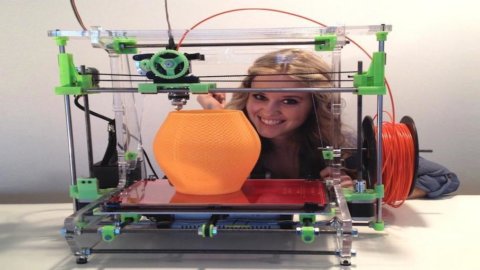Some 40 people flocked to New York last week to find out what 3D printing had to offer for individuals and businesses. writes today the French newspaper Les Echos. Gourmets have been looking for cakes with futuristic shapes, produced by a printer that the US company 3D Systems will commercialize at the end of the year. A mannequin has been pedaling all day on a plastic bicycle, created in one piece by Stratasys printers.
The objects presented at the 3D show in New York are above all simple gadgets. And the protagonists of the sector admit it: 3D printing, which superimposes very thin layers of material (plastic, steel and more) to create an object, is still far from replacing traditional industrial production methods.
Over the long term, there are conflicting views. There are those who are optimistic, like Terry Wohlers, one of the great experts in the sector in the US: “It took 20 years for 3D to produce its first billion in revenue. Then it took 5 years to get to the second billion. And now it won't even take 3 years to double that figure."
Some doctors intervened to reveal the first miracles performed in the field of surgery. Other researchers from NASA, General Electric and Airbus have explained how 3D has allowed them to produce extremely complex parts.
“We are on the cusp of a new industrial revolution,” exclaimed Christine Furstoss, director of technologies at GE Global Research. Between now and 2020, the group will produce over 100 pieces for aviation.
Others are more skeptical. Because while aviation and aerospace have an interest in using 3D printing for complex and relatively unique parts, the rest of the industry would not have the same benefits from investing in this technology. “The penetration of 3D printing in the industry will, at its peak, be 10%,” explains Daniel Cohen of McKinsey.
The problems are pretty well known. Printers and materials are still overpriced. Individuals can find 3D printers for a thousand dollars. But industrial printers cost between $250 and $950. And above all, production is too slow to compete with the traditional system.





